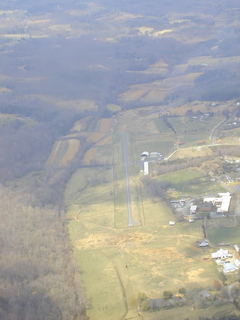« July 2004 | Main | October 2004 »
Sage gets hicksdesigned
When Jon Hicks of Hicksdesign puts together a new look for your feed reader, you take notes. Jon is the pixel master behind the Firefox and Thunderbird icons and an outspoken web standards guru. He writes:
..something that's attracted me back to using Firefox in the last few weeks has been the Sage RSS Reader extension. With a little tweaking to make it look more like an OSX'y, I now have what feels like my ideal Browser/RSS Reader combination.
Jon goes on to provide step-by-step instructions for Sage users looking to make their own visual mods. This is one of the benefits of working with the Mozilla platform.. End User Development. When the barriers to patching an application are unzip and notepad, everyone's a developer. We have a whole group of users poking, prodding, tweaking, and enhancing Sage for their own benefit. Not every mod has broad enough appeal to be incorporated back into the releases, but many do, and all offer insight into use habits.
September 29, 2004 @ 7:56 PM | Permalink | Category: Technology | Comments (0)
my Powerbook gets a new disk
My TiBook DVI was down to the last few bytes of its OEM 40GB Travelstar 80GN drive, so I spent the morning swapping it out for a shiny new 80GB Travelstar 5K80. With a little guidance from the Powerbook G4 Hard Drive Upgrade Guide, I was able to quickly crack open the case, pull out the 80GN and pop in the 5K80. Apple used Torx size 8 fasteners to attach the internal and external hardware, so I had to scrounge around for the right driver bit, other than that, there were no surprises. I slid the 80GN into a slick Macally enclosure, jacked it into the FireWire port, and was booting externally off the old disk in no time.
I was then faced with the challenge of moving my bootable UFS file system from the old disk to an 80GB partition on the new one. I found that Carbon Copy Cloner is a popular tool for Mac disk migration, as it's wise to the resource fork meta data on HFS volumes (the default OS X file system format). Unfortunately it doesn't seem to play nice with UFS, so I kept searching for a solution. Eventually I noticed that OS X's Disk Utility provides disk migration support through it's Restore feature, so I gave it a shot and after around 2 hours of transfer time I had a working copy of my volume on the new disk. I found that creating a bootable image of another disk requires that you select Disk Utility's 'Erase Destination' option in the Restore dialog, this forces a block level transfer as opposed to a file level copy. Without selecting this option I was left with a complete copy of the original, but was unable to select it as the startup disk in System Preferences.
So ends the upgrade saga. Now, not only do I have twice the internal storage in a device the size of half a pack of cigarettes, I've got a larger than expected speedup from the new disk's 5400rpm rotational speed and 8MB cache. Here's to the hard disk industry giving Moore's Law a run for its money.
Note: for those interested in OS X internals, Amit Singh has a section on the Mac boot sequence in his excellent article What is Mac OS X? at kernelthread.com.
September 25, 2004 @ 2:53 PM | Permalink | Category: Technology | Comments (0)
the deal with Live Bookmarks
Live Bookmarks, the new RSS functionality in Firefox, has taken a beating over the last few days. Ben Gooder explains what the goals were for their first stab at RSS in the browser and where they're going with it:
[Live Bookmarks] were never intended to be an answer to the power RSS readers or a comprehensive solution to hardcore RSS/news junkies. ... Firefox's RSS capabilities are designed to expose as much of RSS to regular people as makes sense for light news reading/dynamic content.
...and to this end, it's a good start. I can't help but feel that expectations have been set unrealistically high by more involved implementations in Opera and upcoming Safari RSS. Does Firefox need an integrated heavyweight aggregator if it has an excellent extension mechanism?
September 21, 2004 @ 8:00 PM | Permalink | Category: Technology | Comments (0)
info glut
How long does it take you to work through your feed list? When time's short, those with long lists end up dropping packets during their daily cram. Shyam is looking for local authority analysis and ranking of his feed items to give him a hand:
I want something that does the ranking only from the piece of the pie that I consider important. I want a link or a button on my aggregator which, on clicking, will give me the day's most talked about link or topic.
On a large enough feed list, this might produce interesting results.
September 21, 2004 @ 2:31 AM | Permalink | Category: Technology | Comments (0)
feed discovery, the blogosphere, and Sage
Feed discovery is becoming a hot topic with Sage as we move toward our next release. This feels like uncharted territory and I want to try and highlight some of the options and their tradeoffs.
Discovery is an important component of the aggregator usability equation and an significant opportunity for Sage as its browser integration gives us the ability to do this well. The goal here is to allow users to find and subscribe to new feeds in the most effortless manner possible. I'm going to suggest that there are two complimentary approaches to feed discovery, a lightweight and a heavyweight technique.
At this point in the game, doing feed discovery is something of a black art. There is an accepted method for explicitly associating feeds with HTML documents, but it has yet to spread to the far reaches of the blogosphere and there are a good number of sites that don't make use of it. This is where discovery gets tricky. Without an explicit feed declaration, the only option is to scan through any links present in the HTML document trying to determine which of those might be pointing to a valid feed. There is no feed URL naming convention, so these links can look like anything. Sometimes they're obvious, sometimes they're indistinguishable from other links in the document.
The heavyweight approach is to cover all the bases by checking for explicit feed declarations as well as scan the document identifying feed links in the case that there are no explicit feeds. This is what happens in Sage when you click the 'Discover Feeds' icon. All potential links are probed, meta data is collected for those that turn out to be valid feeds, and the results are ranked by relevance and displayed to the user. The benefit to this approach is the quality of the output, if there's a feed to be found, we'll probably get it. The downside is that it's expensive. It takes network bandwidth and CPU cycles to probe the links in a document and this means you won't get instant results. It also means it would be difficult to perform automatically in the background as the user browses.
The lightweight approach doesn't scan the document body for links to probe, but looks only in the <head> section for explicit feed declarations. If these are found, great, you've got some URL's that probably lead to valid feeds and enough meta data for the user to choose between them. This method is inexpensive and can quickly be done at the users request or in the background as they browse from page to page a la Firefox 1.0 Livemarks and Safari RSS. The downside is that it will come up empty handed on any site that doesn't explicitly list its feeds.
For now, I think the answer may be to make use of both methods, a lightweight discovery process running in the background during regular browsing, and a heavyweight catch-all mechanism available at the user's request. Lucky us, it appears that we're being given that lightweight process with the new Livemarks functionality in Firefox 1.0. In the interim, we should be able to piggyback on this feature, giving users access to automatic feed discovery.
September 15, 2004 @ 7:27 PM | Permalink | Category: Technology | Comments (0)
distributed aerial photography
Earlier in the year, I snapped this pic of Meadow Brook, a local short field, on the way back from a landing at the even smaller Air Harbor. I submitted the image to AirNav and forgot about it. Looks like they've recently included it. I've been using AirNav for a while now, it's quick, convenient, and the mapping and aerial photos give it an edge over the AFD for preliminary flight planning. As an online service, I think there are more opportunities to be explored here in the way of collaborative content creation, a la Wikipedia.
September 13, 2004 @ 7:02 PM | Permalink | Category: Aviation | Comments (0)
superfortress flyby
"Fifi", the world's only flying B-29, makes a low pass over Smith Reynolds Airport to cap off the airshow weekend.
This plane is such a monster that I was able to hear, and then see, the maneuver from my apartment window three miles away.. felt like I had stepped into the History Channel.
Thanks to Mike Burr for the on-site images.
September 13, 2004 @ 4:59 PM | Permalink | Category: Aviation | Comments (0)
Sage building steam
Things are really starting to move at the Sage Project. We're getting thousands of downloads a day, multiple code/locale contributions a week, and I'm losing the battle against my ever growing inbox. Good thing I've found a few generous souls to give me a hand.
September 10, 2004 @ 9:43 PM | Permalink | Category: Technology | Comments (0)



